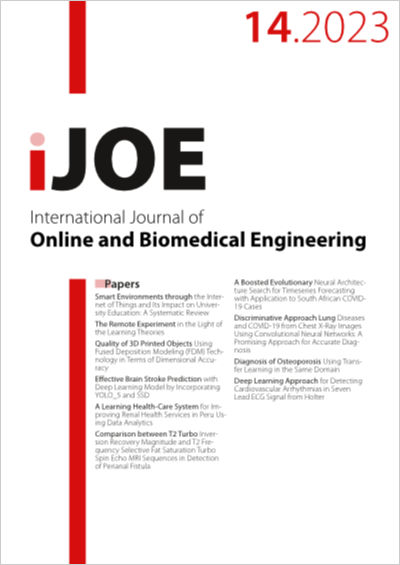Smart Environments through the Internet of Things and Its Impact on University Education: A Systematic Review
DOI:
https://doi.org/10.3991/ijoe.v19i14.41531Keywords:
university education, higher education, intelligent environments, internet of thingsAbstract
At present, there is diverse scientific evidence of the contributions of smart environments (SE) that have positively impacted various urban problems. However, the concept of SE is very broad, so it is relevant to investigate how these technological trends have been integrated into the university educational environment. Therefore, the objective of this study is to explore and describe the state of the art on the impact of intelligent environments implemented through the Internet of Things (IoT) in university education. Therefore, a systematic review of the literature was developed. The research was developed with a mixed approach and descriptive scope. From this study, it was determined that the purpose of implementing SE in university education is focused on contributing to the teaching and learning process and managing and optimizing the use of resources provided by the educational environment. In addition, smart classrooms are the type of environments that have been implemented to a greater extent and whose results show a positive impact on indicators such as motivation, participation, interaction, satisfaction, and student attitude. With which it is concluded that universities should reflect on the implementation of institutional policies that lead to the progressive implementation of SE, seeking to transcend from being just simple learning classrooms to sustainable environments that contribute to student health and environmental conservation.
Downloads
Published
How to Cite
Issue
Section
License
Copyright (c) 2023 Omar Chamorro-Atalaya, Guillermo Morales-Romero, Adrián Quispe-Andía, Beatriz Caycho-Salas, Primitiva Ramos-Salazar, Elvira Cáceres-Cayllahua, Maritza Arones, Renan Auqui-Ramos

This work is licensed under a Creative Commons Attribution 4.0 International License.



